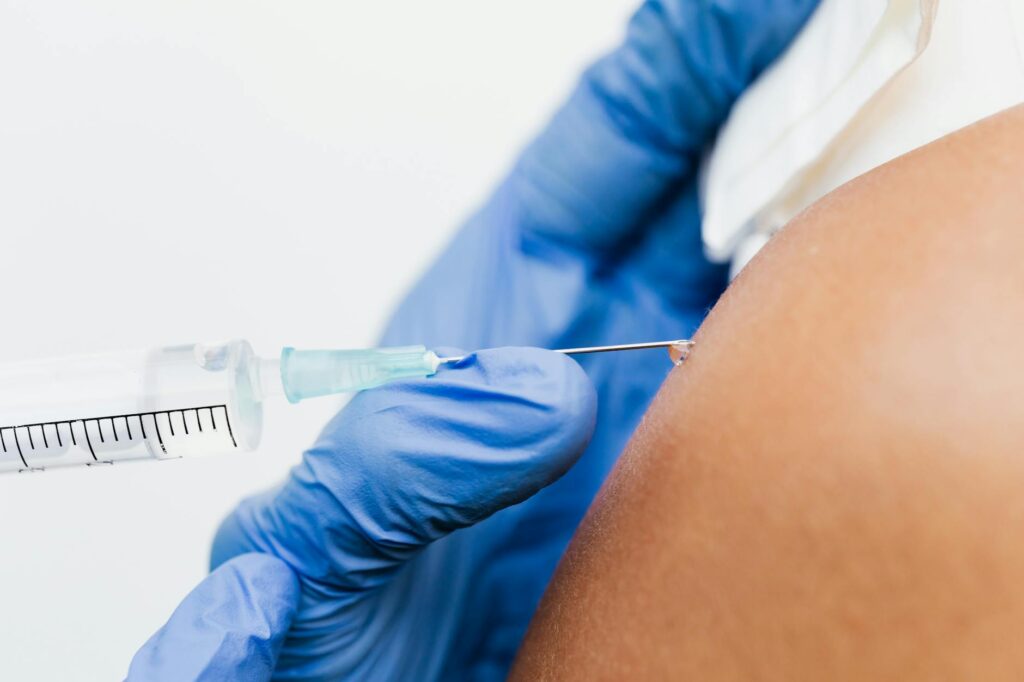One of the best things you can do to prevent skin cancer from affecting you is to have regular skin exams.
In case you are visiting the dermatologist for the first time or going in for a yearly checkup, knowing what to expect will help make you more comfortable and confident.
A professional skin examination is usually applicable to an annual skin check.
Here is what happens during a skin exam, why, and how to prepare.
☀️ Why Are Skin Exams Important?
Skin cancer is currently the most common cancer in the world.
Luckily, it’s also one of the most treatable cancers if caught early.
Your dermatologist can identify suspicious moles, spots, or lesions before they turn into something dangerous with a full-body skin exam.
Identifying melanoma or another form of cancer at an early stage means simple and effective treatment can take place.
✨ Early detection saves lives.
It is important to see your dermatologist for a professional skin exam once a year, if not more, especially if you:
- Have a history of skin cancer or precancerous lesions
- Have many moles or freckles
- Spend a lot of time in the sun
- Have fair skin or a family history of melanoma
🧴 Here’s How to Get Ready for Your Skin Exam
It is important to be prepared so the dermatologist can properly evaluate your skin.
Before your appointment:
- Remove makeup, nail polish, and heavy lotions 💄
- Wear loose, easy-to-remove clothing 👕
- Write down all the moles or spots you’ve noticed ✍️
- Bring a list of your current medications and any previous skin issues 💊
- Avoid tanning or using self-tanner for at least a week prior to your exam ☀️
This makes it easier for your dermatologist to assess any changes in your skin accurately.
🔍 What Occurs Throughout the Examination Process
A skin exam normally lasts 10–20 minutes, depending on how many moles or lesions you have.
Here’s what usually happens:
- The dermatologist reviews your medical and family history 🩺
- You’ll be asked to change into a gown for a full-body examination 👗
- The physician inspects your skin under bright illumination, sometimes using a dermatoscope 🔬 — a specialized device to look for unusual patterns in moles
- The scalp, behind the ears, between the fingers and toes, and the soles of the feet are checked too — these are common hidden sites for melanoma 👣
If the dermatologist sees anything unusual, they will take a small biopsy (a tiny skin sample).
The procedure is short, nearly painless, and performed under local anesthesia.
🧠 Understanding the Results
After your exam:
- If it’s all normal, your dermatologist will advise how often to follow up (usually once a year) 📅
- If a biopsy is done, you’ll get results within 1–2 weeks 🕐
- Benign (non-cancerous) moles require no further action
- The doctor will explain any precancerous or cancerous test results clearly
🪞 Here’s What You Can Do at Home Between Exams
It’s important to get yourself professionally examined regularly — but also to check your skin monthly.
Go over every inch of your body using a mirror or camera to spot anything unusual.
Use the ABCDE rule to evaluate moles:
- A – Asymmetry: shape of each half is not symmetrical
- B – Border: uneven, blurred, or jagged edges
- C – Color: uneven shades of brown, black, or red
- D – Diameter: mole larger than 6 mm
- E – Evolving: gradual change in shape, size, or color
🚨 Reach out to a dermatologist right away if you notice anything new or changing.
🌿 Final Thoughts
Having a skin exam is an easy, painless process that can literally help save your life!
By not only having regular check-up appointments but also monitoring your skin, you can prevent serious illness.
First things first — knowing what to expect, whether it is your first exam or tenth, allows you to feel calm, informed, and in control of your skin’s future.




